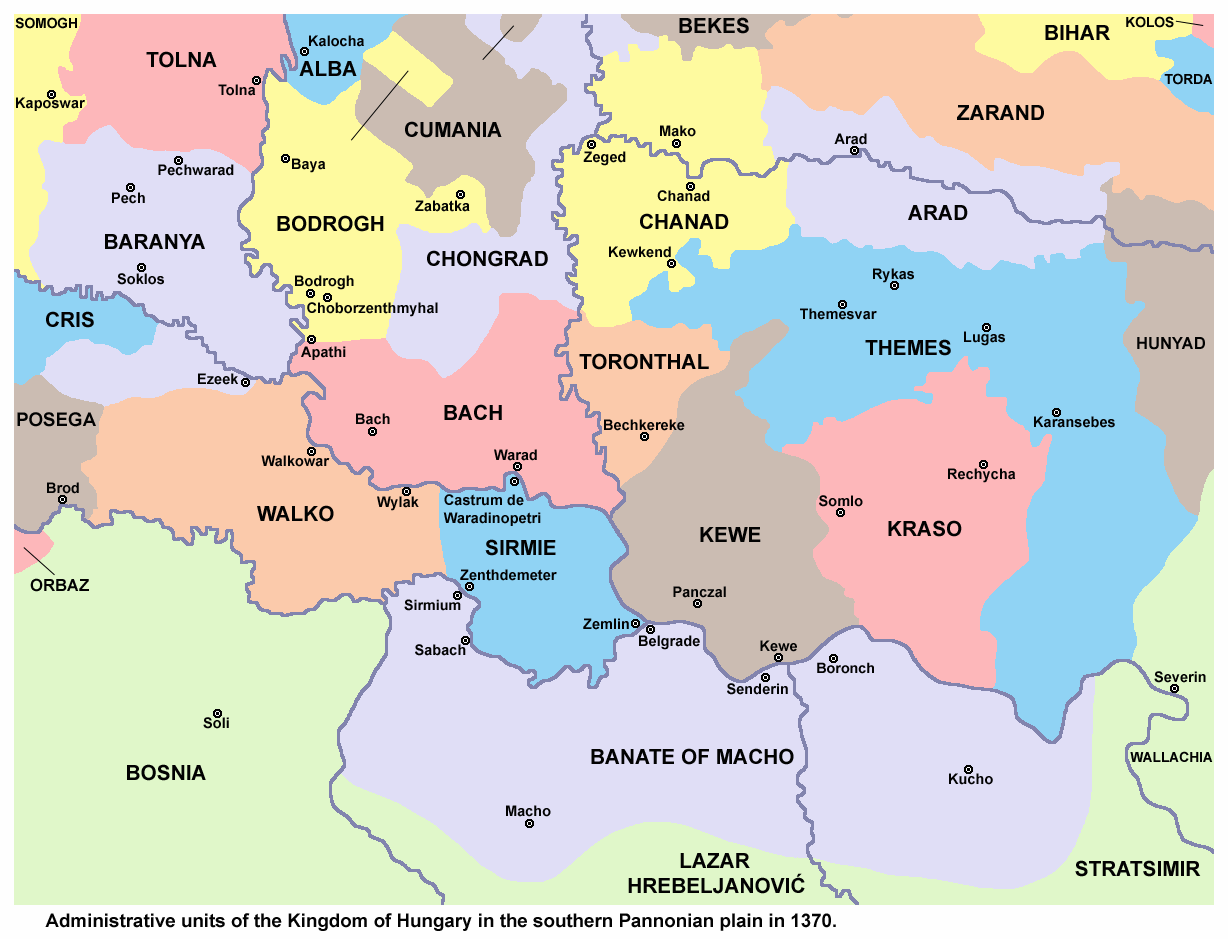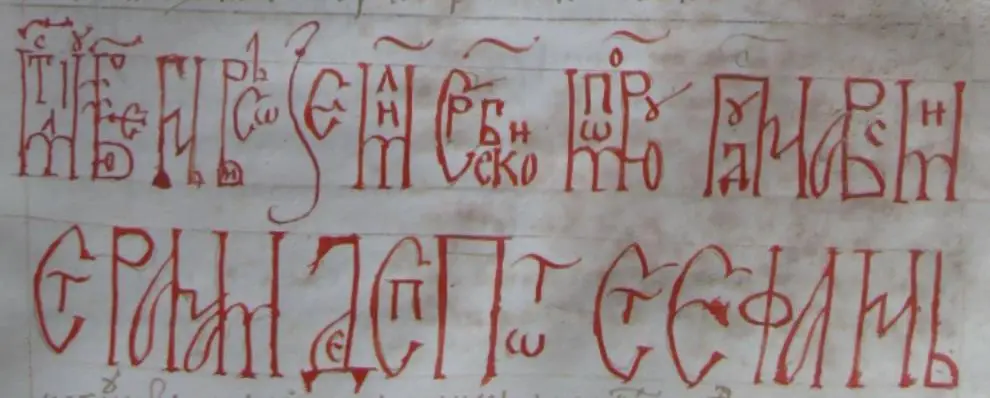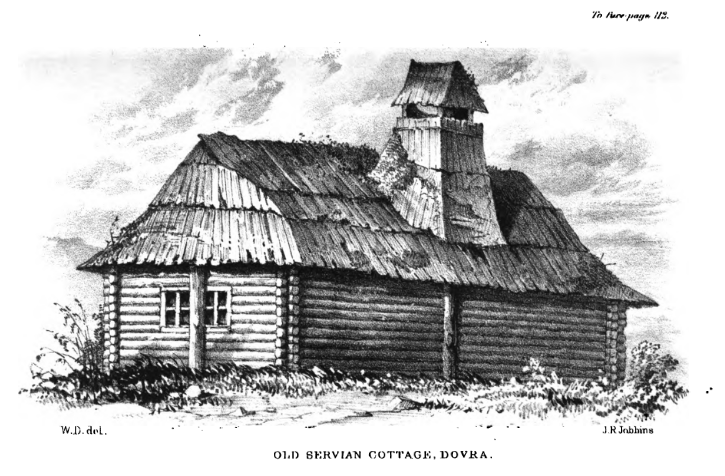By: Jevto Dedijer
III
According to various natural characteristics of Old Serbia we can distinguish two parts, the Skoplje one and the Kosovo part of Old Serbia. Both are separated with the Šara-Karadag mountain range, which creates not only one barrier to traffic, but creates an important climate and phytogeographic border. On the southern side, as we will later see, the influences of the Mediterranean climate and vegetation are the dominant, while the northern side is dominated by the Central European ones. Long, hot and dry summers with long autumn rains are the characteristics of the former and mild summers, rains at all time of the year and snowy winters of the latter climate.
In Skopje Old Serbia we can distinguish multiple smaller units, among whom especially stand out Skopje Valley and the Ovče Polje heights. Both regions represent the remains of a tertiary lake, which spread out far towards the south. Ovče Polje represents either one older phase of that lake or a part which was later raised up through tectonic processes. Ovče Polje represents a flat with an average level of 400m [above sea level, translator’s note], with peaks which sometimes go above 750m, which lies above the Skoplje valley by 100 to 150m, composed of tertiary freshwater sediments* and whose surface is not much damaged by the eroding work of river water. It is 40-50km long, 30km wide, with an area of 1400km2. Rising up from a valley of a significantly lower height Ovče Polje is open in all directions and due to this it is open to air currents, especially to bad weather and tempests. Such a state conditions sharp and snowy winters, hot and dry summers. “Therefore significant part of it have a steppe look in the summer: they are naked and seared, the grains are ripened and the stalks and cornstalks are dry, only in the salt marshes is there some greenery. Even minor winds kick up sand and dust… The Sun’s rays bake and hotly warm up the naked, yellowish and slate-ish stone, which shines and can not be looked upon. There are almost no trees. Inhabitants of Ovče Polje receive timber from Mitrovica [Kosovska Mitrovica, translator’s note] and it is transported by rail to Veles. Fire in the homes is maintained mainly through straw with little firewood”. (Ј. Цвијић, “Основе за географију и геологију Македоније и Старе Србије”, vol I, pp 224 to 225).
The Skoplje valley is composed one mountainous region Skopska Crna Gora [Skopje’s Montenegro, translator’s note] (average height around 500m) and the Skopje flats (average height 240m), which taken together cover 393km2. Framed by tall mountains with frequent and deep saddles, passes and gorges the Skopje valley has an especially nice panorama: on the horizon one can see the bulky mountain massifs, often deeply cut and opened, usually bare, rocky with sharp peaks which are often covered in snows even in the summer. With its base rock is made up of differently aged rocks, filled with soft lake neogene sediments, filled with rivers and pools, the Skopje valley has hot summers with hot air, which due to the much swamp evaporation becomes stuffy. The winter is very sharp, with a strong northerly wind blowing down the Kumanovo-Preševo valley, which carries great snnowdrifts.
Northern or Kosovo Old Serbia along with Metohija, the Prizren valley and the Drim basin make one geographic whole, to which are tied the Šara [mountain range, translator’s note] župas of Sirinić, Sredska and Opolje and the Lim [river, translator’s note] župas of Plav along with Gusinje. This region, based on its climate and vegetation, which carry a Central European characteristic is very different from the Skoplje Old Serbia.
“North of the Kačanik gorge not even weak Mediterranean influences are felt; Kosovo, Metohija and other valleys to the north of Kačanik have a Central European climate. Summer there are not such heats as in Skoplje Old Serbia and further afield in Macedonia: the sky is more cloudy, rains are not a rarity, the atmospheric influences are more evenly distributed to all the seasons, and over the winter there is great snowfall. Because of this there are multiple little rivers which do not run dry even in the summer; rivers, whose basins are south of the Kačanik gorge carry much more water; the majority or rivers are rich with water, with their valleys being moist and covered in verdant greenery even in the summer. North of the Kačanik gorge there is not that summer sear and wilting, not is the ground of the familiar yellowish and yellow-red colour; a covered, green land prevails: great forest complexes of oak and beech, then verdant pastures and meadows. Not only are the southern cultivation plants not present, but even the vineyards are rare. Instead of them spacious fields of grains appear, especially wheat and corn, then plums, which starting immediately from Kačanik and going north has an increasing coverage” (“Основе за Географију и Геологију Македоније и Старе Србије”, by Ј. Цвијић, vol III. Belgrade 1911, pp 1052-1053).
The areas west of Vardar, especially Tetovo, Poreč, Kičevo and Kopač are in the middle between the Macedonian and Old Serbian valleys. The winters are mostly sharp, long but often without the long-lasting strong winds. Springs and autumns are short and rainy. Summers are fresh, pleasant, with enough rain and without the insufferable heatwaves. The regions are very rich with cloud cover. The Sanjak of Novi Pazar represents a significantly different region, both by the composition and the plasticity of its soil and by the characteristics of the climate and vegetation. While the other two parts of Old Serbia were in the region of the Rhodopes massif or in the region where it collided with the ranges of the Dinaric Alps and the Greco-Albanian mountain systems, the Sanjak of Novi Pazar is almost completely in the region of the Dinarides system. It is dominated by the mountain ranges, mostly of limestone and karst, often very wide and with high plateaus. Besides the peak-filled and dense mountain ranges this region is also characterised by not having as wide valleys as the other two parts of Old Serbia. The climate is mountainous, summers are mild and rainy while winters are sharp and snowy. It seems this regions is very rich with cloud cover. From the other karst areas it is differentiated by a great number of rivers, and large rivers at that, of which the most important are Tara, Lim, Ćotina [Ćehotina, translator’s note] and Uvac. Due to the circumstances which ruled the area until now, a significant part of the region has been left unexamined, almost scientifically unknown.
Translated by Books of Jeremiah



